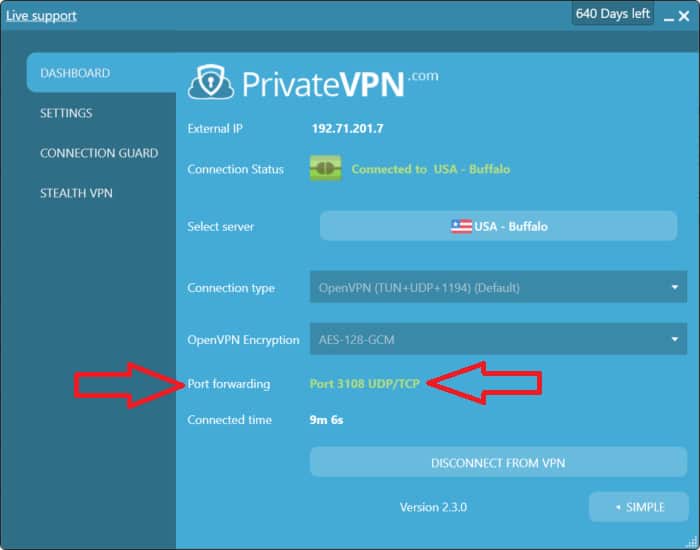VPN port numbers and services software ports provide
Software ports
The network port is usually number and standard network protocols like TCP, IP, UDP attaches a port number to the data it sends. A port number is to be assigned to each message according to the TCP layer requirements. This port (logical reference) number determines the type of service provided. This software network port (address in the form of a number) is assigned to a service for communicating between a program and another program/communication system. This naming system is logical and pertains to the services that carry on long term conversation. A list that specifies the port used by the server process is known as its contact port. A service contact port is defined to provide specific service to unknown callers. These software network ports also connect internal programs on the same computer. Numbers from 0 to 1023 are used to identify a network service on the internet (Internet Protocol). Each IP packet contains a TCP or UDP header which directs applications to the appropriate application in the server. Reserved port numbers and unassigned numbers can be used by application programs.
The Internet Assigned Numbers Authority (IANA) registers ports 1024 to 49151 for the convenience of internet continuity. Port numbers from 49151 to 65535 are called dynamic ports and are private. You could look up IANA for more details on assigned port numbers. The most well-known port is 80, which identifies HTTP traffic for a Web server. The Well Known Ports are assigned by the IANA and on most systems can only be used by system (or root) processes or by programs executed by privileged users. Port numbers are straight unsigned integer values which range up to a value of 65535. Below is a list of well known ports and their services.
| Port | Service |
| 20,21 | FTP (File transfer) |
| 22 | SSH (Remote login secure) |
| 25 | SMTP (Internet mail) |
| 53 | DNS (Host naming) |
| 80 | HTTP (Web) |
| 88 | Kerberos (computer authentication protocol) |
| 110 | POP3 (Client access) |
| 119 | NNTP (Usenet newsgroups) |
| 123 | NTP (Network time) |
| 137-139 | NetBIOS (DOS/Windows naming) |
| 143 | IMAP (Client access) |
| 161,162 | SNMP (Network management) |
| 163,164 | CMIP (Network management) |
| 443 | HTTPS (Web secure) |
| 514 | Syslog (Event logging) |
| 563 | NNTPS (Usenet newsgroups secure) |
| 993/tcp | IMAP4 over SSL, Internet Message Access Protocol |
| 995/tcp | POP3 over SSL, Post Office Protocol |
| 989,990 | FTPS (File transfer secure) |
| 1723 | Virtual private network (VPN) |
IP Addresses
TCP/IP stands for Transmission Control Protocol and IP for Internet Protocol. These protocols are responsible for transporting and managing the data across the network. The IPv4 requires a 4 byte address to be assigned to each network interface card that exists on all the computers in the network where as the Ipv6 assigns a 6 byte address. IP Addresses works almost like a house address without which determining where data packets go would be impossible. This assignment of address can be done automatically by network software’s such as the DHCP which is the dynamic host configuration protocol or by manually entering static addresses into the computer. The part of the IP address that defines the network is the network ID, and the latter part of the IP address defining the host address is the host ID.
Using this port and addressing scheme, the networking system can pass data, addressing information, and type of service information through the hardware, from one computer to another. Continue to: VPN ports and Hardware Ports

ExpressVPN Fast, anonymous browsing all over the world | ||
NordVPN Enjoy online privacy and security with a reliable VPN | ||
Cyber Ghost Browse anonymously with reliable security | ||
SurfShark Affordable and reliable VPN for secure browsing | ||
ZenMate Experience the internet anonymously | ||
Purevpn Keep your data secure with a VPN built for privacy |








